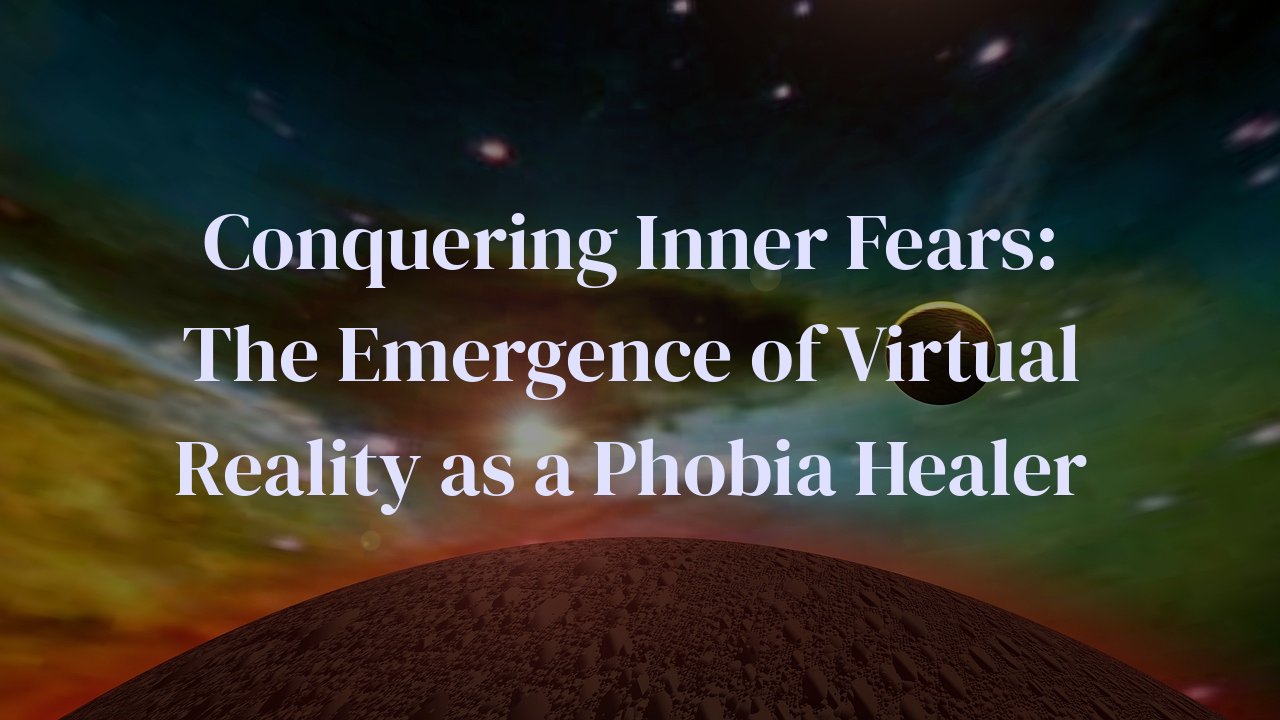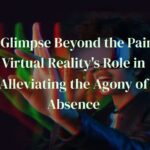
Embarking on a journey to understand the innovative intersection of technology and psychology, this post delves into the transformative power of virtual reality (VR) in the realm of therapeutic practices, specifically its application in treating phobias. This exploration is not merely an explanation of the methods but an insight into the potential relief it offers to those gripped by irrational fears. Unpacking the details of this modern approach, we’ll investigate not only how VR is revolutionizing the treatment of phobias but also what makes it such an effective tool. If you or a loved one grapple with phobias, stay tuned to discover a possible path to freedom from fear through the lens of personal experience and professional understanding.
Table of Contents
Understanding Phobias: A Glimpse Into Fear’s Tight Grip
Phobias are often like invisible chains that bind their sufferers to a world dictated by fear. In my journey to comprehend the depths of these fears, I’ve come to understand phobias as more than mere apprehensions; they are intense, irrational fears triggered by specific situations or objects, often rooted in personal experiences or psychological traumas. Each one of us may have a brush with anxiety, but phobias differentiate themselves by their capacity to significantly disrupt daily life and cause pronounced distress.
The grip of a phobia is no light clasp; it is the iron fist of dread that squeezes joy out of experiences, compelling individuals to avoid fear-inducing scenarios at all costs. It can manifest in many forms, from the well-known arachnophobia – the fear of spiders – to the less common but equally debilitating trypanophobia – the fear of needles. These fears can activate the body’s fight-or-flight response, leading to symptoms such as rapid heartbeat, sweating, and breathlessness that mirror a genuine threat to one’s safety, despite the acknowledged awareness of the irrationality of the fear.
My personal encounter with acrophobia, the fear of heights, left me with knees trembling on the third step of a ladder, heart pounding as if climbing Mount Everest. I’ve seen how phobias can trap individuals within invisible boundaries, making tasks like crossing a bridge akin to an insurmountable challenge. Understanding phobias has become crucial to my quest for liberation. Through learning how phobias work within our minds – the sudden panic attacks when confronted with the fear, the avoidance behaviors, and the overwhelming anxiety – I’ve grasped the need for innovative strategies that can loosen fear’s tight grip without overwhelming the sufferer.
Such understanding is a slice of solace, confirming that we are not alone in our fears, and that they’re recognized and valid in the world of psychology. With the emergence of cutting-edge therapies like virtual reality (VR), there’s a beacon of hope for many, including myself, who are caught in the struggle with their inner demons. It is this comprehension of phobia’s profound effect on human lives that fuels the relentless search for solutions, leading to promising horizons like VR therapy, which I am keen to explore further in overcoming my own fears and helping others on the same path.
Immersive Cure: How Virtual Reality Treats Phobias
Embarking on a journey to conquer inner fears can be a tumultuous path paved with anxiety and uncertainty. However, the technologically advanced world we reside in has opened a revolutionary door to treatment methods that were once a figment of imagination. I’ve witnessed, firsthand, the incredible potential of Virtual Reality (VR) technology in the realm of mental health, specifically in the treatment of phobias. Let me take you on a deep dive into the immersive cure that is VR therapy, which I refer to as a digital key unlocking the shackles of fear.
Virtual Reality therapy functions by gently coaxing the mind into facing its fears in a contained and controlled environment. This unique modality utilizes specially designed software which creates a simulated world where patients can experience their phobic triggers without actual risk. It’s a form of gradual exposure that is quintessential in cognitive-behavioral therapy, but with a digital twist. As someone who has undergone VR therapy for a fear of heights, I can attest to the surreal sensation of standing atop a skyscraper while in reality, I was firmly grounded in a therapist’s office, a safe disconnect that made all the difference.
The beauty of VR therapy lies in its customization. Programs are tailored to individual needs, creating a paced approach to exposure that respects a person’s thresholds. In my sessions, the scenarios intensified incrementally, allowing me to build confidence and regain control over my responses to the feared stimuli. The visuals and auditory effects were so lifelike, that my brain was tricked into believing the experience was real, and thus, I was able to confront my phobia head-on while learning vital coping strategies to manage my anxiety in the process.
Throughout the treatment, I was immersed in various scenarios where my inner fears were vividly portrayed, yet I was continuously reminded of the artificial nature of the experience. This understanding gave me the courage to proceed further each time. Feedback from the therapist was instantaneous, and the sessions were interspersed with discussions about the emotions and reactions evoked by the VR encounters. Together, we deciphered the patterns of my fear and established means to challenge them, both virtually and in the real world.
VR therapy, though a technological marvel, is intimate and personal. It bridges the gap between understanding one’s fears and actively overcoming them. The individualized virtual experiences, combined with professional guidance, helped me take back the reins of my emotional well-being. Over time, the once debilitating phobia diminished in intensity, allowing me to ascend actual heights with a sense of liberation that was once inconceivable. Through VR’s immersive cure, I have tasted triumph over a fear that had once firmly anchored itself in my psyche, exemplifying the transformative power of where technology meets psychology.
Personal Tales of Virtual Triumph: My Experience with VR Therapy
I still vividly remember the overwhelming dread that would flood through me at the mere thought of heights. The fear was debilitating, casting a long shadow over family outings, job opportunities, and even simple recreational activities. This was my reality before embarking on the unexpected journey that virtual reality therapy offered.
My first encounter with VR therapy was tinged with skepticism. Dons of goggles, and headphones seemed like another high-tech gimmick–until the immersion began. Slowly, the therapeutic process transported me to various scenarios that I had previously avoided at all costs: standing atop bridges, looking down from skyscrapers, and riding elevators to agonizingly high floors.
The most transformative aspect of virtual reality therapy for me was the controlled environment it provided. Each session, my therapist would gradually increase the intensity of my exposure to heights, monitoring my physiological responses and giving me techniques to manage anxiety. I learned to breathe through the panic, to reframe my catastrophic thoughts, and, incredibly, to find a sense of calm in the simulated environments that once would have triggered abject terror.
The triumph wasn’t immediate. It took multiple sessions, each pushing the boundary of my comfort zone further than the last. There were moments of backslide, times when the fear seemed to reassert itself with a vengeance. Yet, the safe confines of VR, coupled with the supportive voice of my therapist, encouraged me to persevere.
The culmination of my therapy was a moment etched in my memory. Standing virtually atop a skyscraper, gazing down upon the bustling city below, I felt a sense of exhilaration instead of fear. That moment transcended the virtual world; several weeks later, I found myself on an actual rooftop lounge, toasting to a personal victory over a phobia that had once ruled my life. It was then I realized the true potential of VR therapy–not just as a tool to simulate experiences, but as a powerful catalyst for real-world change.
The Science and Success Rates Behind VR Phobia Treatment
The therapeutic landscape for phobias has been reshaped by the innovative integration of virtual reality (VR). The foundation of this technology is rooted in the principles of exposure therapy, where patients are gradually introduced to their fears in a controlled setting, allowing for the process of desensitization. VR takes this a step further by immersing individuals in a simulated environment.
At its core, VR therapy for phobias leverages the concept of ‘presence’, giving the user a sense of actually being in the virtual world. This is paramount for the therapy’s effectiveness as it triggers the same psychological responses one would experience in a real-world scenario. The patient can confront their phobia in a safe and regulated environment, where the intensity of the exposure can be meticulously adjusted to match their threshold for anxiety.
Success rates from various clinical trials have been promising, underpinning VR’s potential as a robust tool in the phobia treatment arsenal. According to a meta-analysis published in the ‘Journal of Anxiety Disorders’, VR exposure therapy has consistently shown high efficacy rates, sometimes comparable to traditional exposure techniques. The immersion can reduce the felt distance between the patient and their fear, leading to rapid desensitization and potential long-term phobia management.
Research from institutions like the Virtual Reality Medical Center in San Diego, California, has shown success rates of up to 90% for specific phobias treated with VR. This includes common fears such as acrophobia (fear of heights) and arachnophobia (fear of spiders). Patients reported a significant reduction in anxiety levels and avoidance behaviors after a series of VR therapy sessions.
Furthermore, in the article ‘Effectiveness of virtual reality exposure in the treatment of arachnophobia using 3D games’, researchers demonstrated that VR games could even be used effectively to help individuals overcome their spider phobias. Hence, the success rate isn’t limited to clinical settings but spreads to more accessible and perhaps less intimidating platforms.
In preparing for a VR therapy session, patients can anticipate a personalized treatment plan. Upon arriving at the clinic, I remember feeling a mix of nervousness and intrigue. The therapist guided me step-by-step, ensuring that the pace was aligned with my comfort level. The first VR encounter was terrifying, but each subsequent session became easier. This personal journey is a testament to VR’s profound capacity for change, and many others can attest to similar breakthroughs.
Preparing for a VR Therapy Session: What Patients Can Expect
As the dawn of a therapeutic journey inches closer, patients entwined in the vines of phobia may find themselves on the precipice of a revolutionary healing path, one adorned with the headsets of virtual reality (VR) and the beckoning of a digital horizon. The air, charged with both anticipation and trepidation, hums as one prepares for what I, too, have personally experienced; a voyage into the realms where fears are faced, not with physical confrontation but within the safe confines of virtuality.
The preparatory steps, a critical aspect to ensure comfort and efficacy, begin with a comprehensive introduction to the VR technology itself. Clinicians usually foster an understanding environment, one devoid of judgment, where patients familiarize themselves with the headsets, controllers, and auditory equipment. This acquaintance phase is pivotal, as comfort with the apparatus sets the stage for a successful therapeutic session
Prior to immersion, a session-depth discussion paints the forthcoming digital scenario. An assortment of simulations is often available, tailored to specific phobias. Whether it is a fear of heights, spiders, or the confines of a cramped elevator, the customization ensures a direct yet gentle confrontation with one’s fears, in a controlled, progressive manner. In my own journey, this careful selection process assuaged my initial fears, transforming apprehension into a tangible eagerness.
Psychological readiness is the next watchpoint as therapists engage in dialogue and exercises designed to equip patients with coping strategies. These methods serve as psychological armor, aiding in managing anxiety levels during VR exposure. The bolstering of mental fortitude, through breathing techniques or mindfulness, appeared—at least in my experience—as a reassuring companion amidst the virtual waves of challenge.
As the moment to don the VR ensemble arrives, patients are assured that they will not be abandoned in their digital sojourn. A therapist will stand sentinel, observing and guiding the experience, ready to anchor one back to reality should the need arise. This dual presence, of both participating in a virtual world and the acknowledgment of a watching, caring professional, formed—for me—the bedrock of security necessary to venture forth.
Entering the simulation initiates a dialogue between the mind and the virtual construct. It is an intricate dance, one wherein patients learn to measure their responses, challenge their fears, and through repeated sessions, erode the overpowering might of their phobias. Each encounter with the VR setting brings incremental victories, and the journey, though individual, bears a communal spirit of countless quests for freedom from fear—an odyssey in which I’ve taken prideful steps, alongside many brave souls, under the healing gaze of virtual reality.
Conclusion
In a world where our deepest fears can often hold power over us, the advent of virtual reality therapy shines as a beacon of hope. Through this post, we’ve unraveled the layers of VR in phobia treatment, from theoretical underpinnings to real-world applications, revealing its impactful role in providing patients with a new lease on life. The journey through VR treatment is one of both technological marvel and human resilience, and as we continue to witness advancements in this field, we remain optimistic about the prospects of helping individuals reclaim their peace of mind. May the insights gleaned serve as a springboard for those seeking to understand and perhaps overcome their phobias using this cutting-edge therapeutic avenue.



